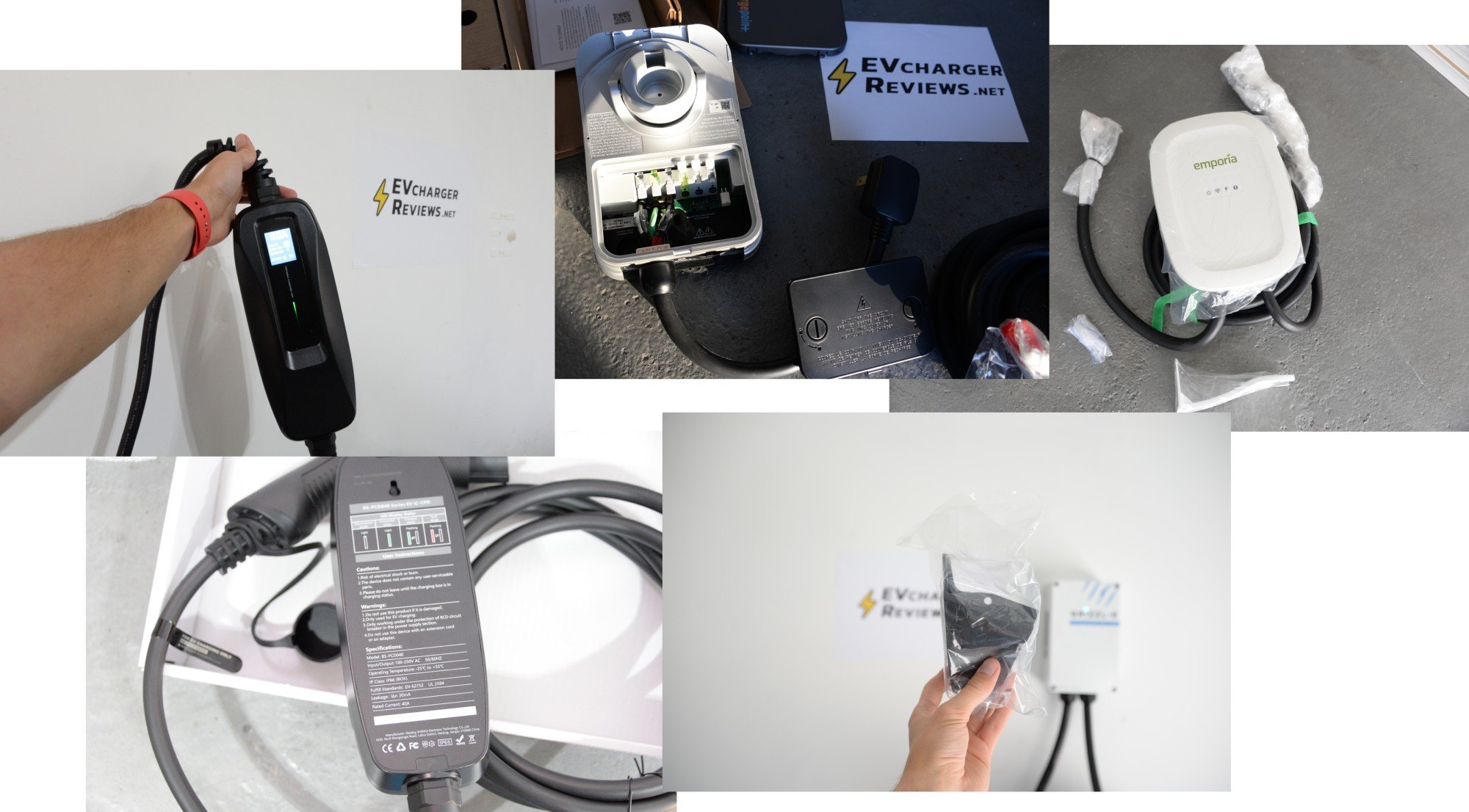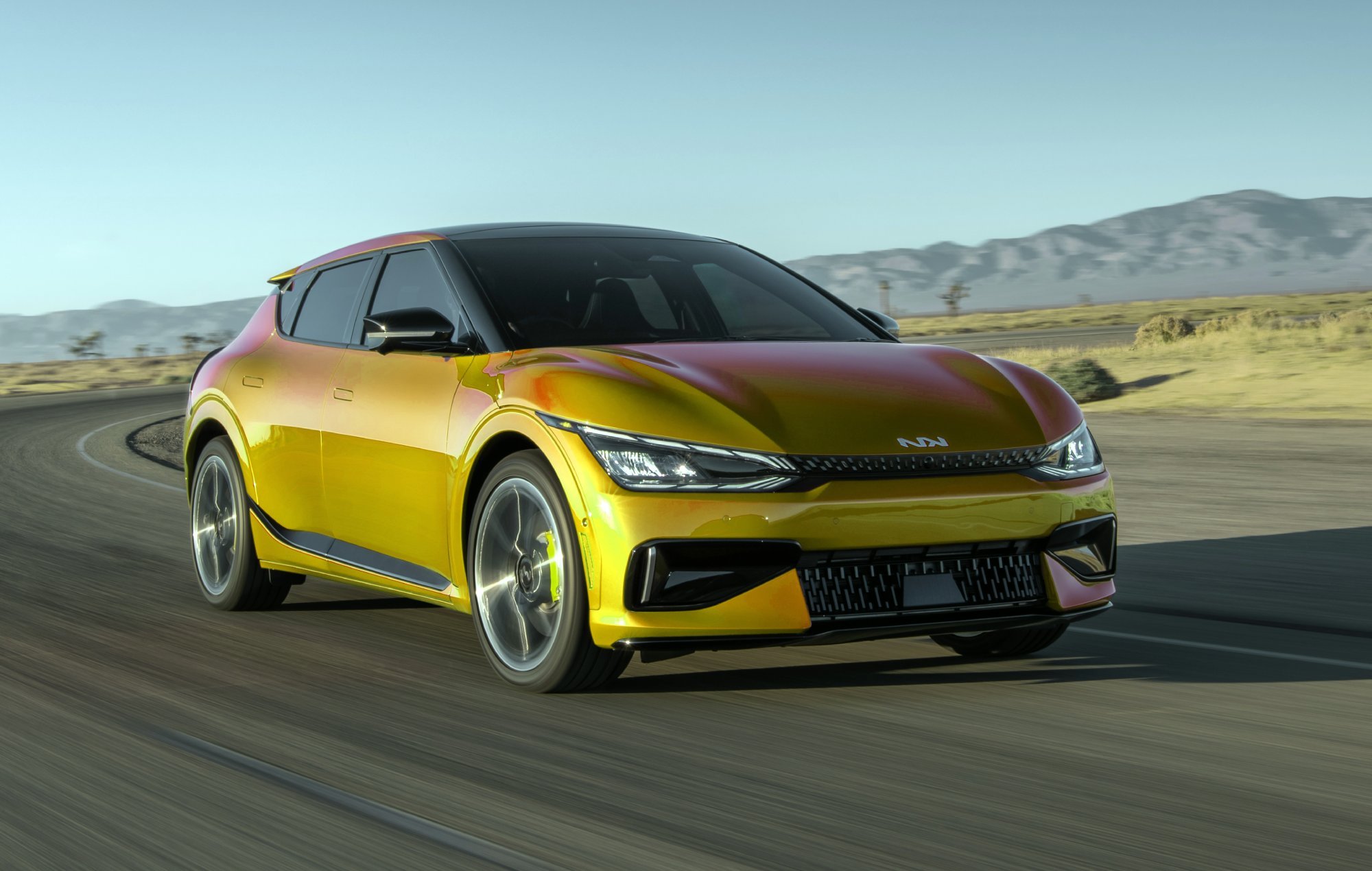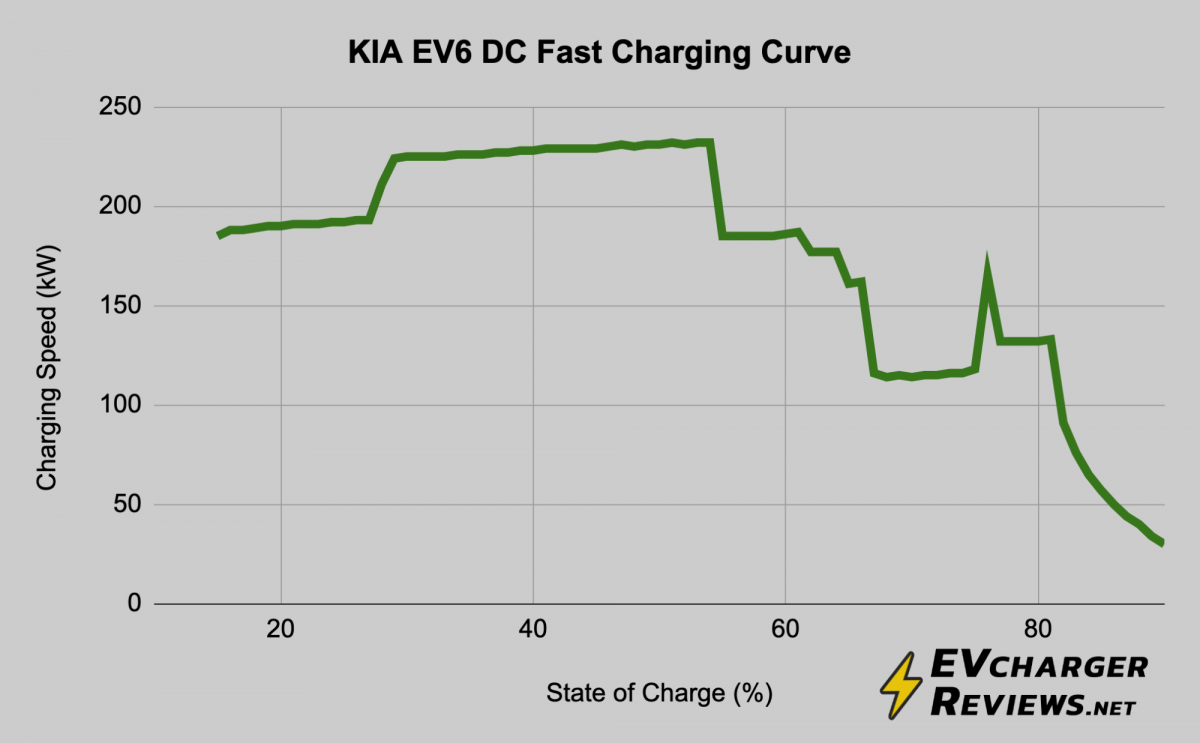EVchargerReviews is supported by our readers. We may earn commissions from links on this page. Why trust us?
Best Home EV Chargers for KIA EV6
The Kia EV6 is an electric crossover SUV introduced first in 2021. The EV6 is based on the 800-volt E-GMP platform, similar to the Hyundai Ioniq 5.
The Kia EV6 is available in rear-wheel drive or all-wheel drive configurations, and battery capacity is either 58 or 77 kWh depending on trim level. This results in an EPA range between 232 miles (smaller battery, RWD) and 310 miles (larger battery, RWD) according to the EPA. The EV6 is largely unchanged for 2024, but it’s a very competitive EV among rivals.
The 2024 Kia EV6 uses a standard J1772 / CCS charging connector with an onboard 48 A, 11.5 kW charger. With a powerful enough home charging setup, you can expect to fully recharge the EV6 in about 7 to 9 hours. See our top picks below for the Kia EV6.
Why trust us? We have hands-on testing experience with the most popular EV charging products.
Kia EV6 Charging Fast Facts
| EV Charging Connector | J1772 / CCS |
| Battery Capacity | 58 – 77 kWh |
| Level 2 Charging Power | 11.5 kW |
| Level 2 Max Amps | 48 A |
| Level 2 [20-80%] Charge Time | 3.5-4.5 Hours |
| Level 3 Peak Power | 233 kW |
Autel MaxiCharger AC Lite (40 or 50 Amp)
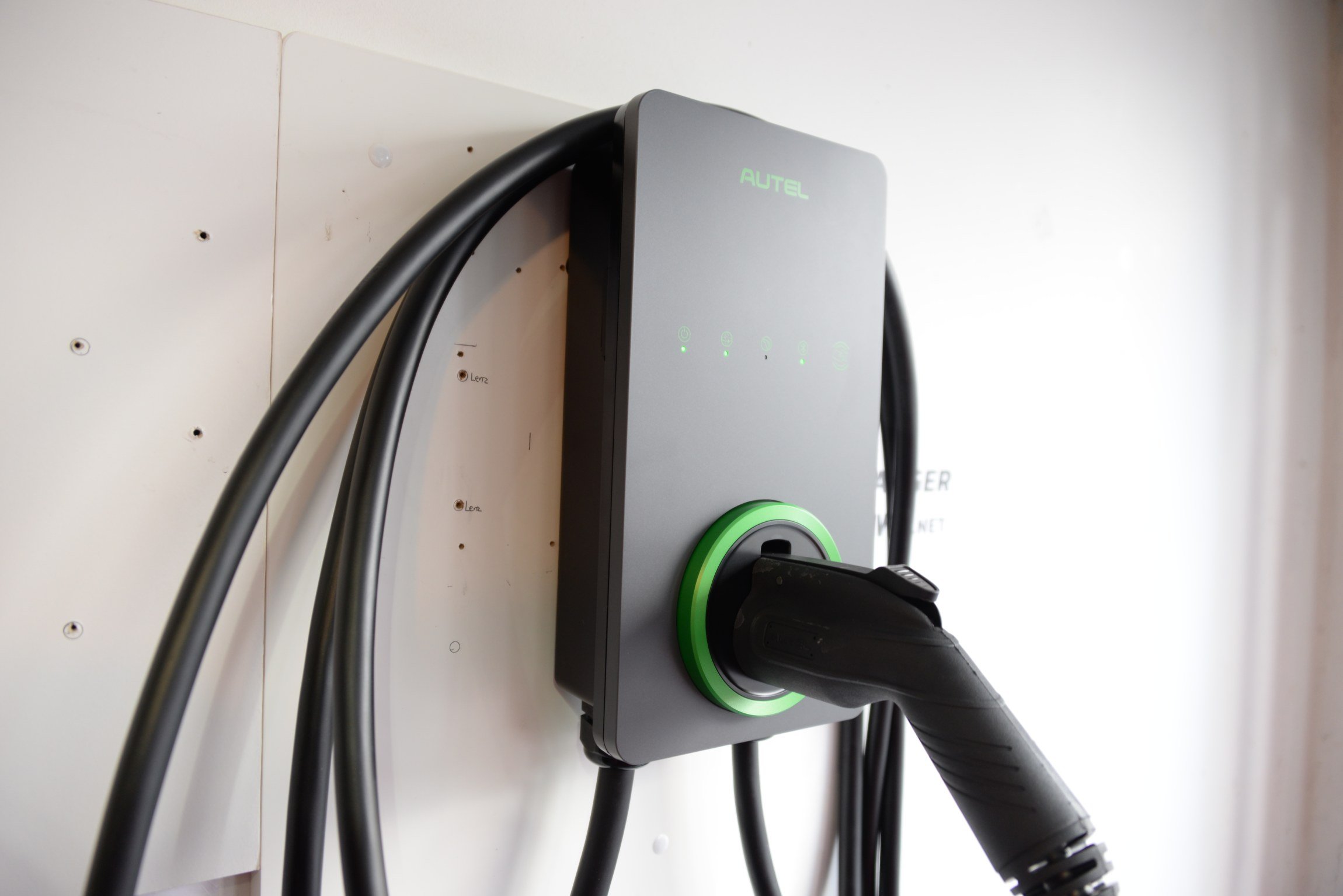
Autel is getting serious about EV charging, they are expanding their public charging and home charging products very quickly. New for 2024, is the MaxiCharger AC Lite. We enjoyed testing this product because it offers solid charging and thermal performance at up to 50 amps, and includes long input/output cables.
This is a fully networked “smart” home charging station that is always connected to the Internet. This allows management from Autel’s excellent mobile app to accurately track consumption and energy costs. Warranty is solid too, at 3 years.
The RFID card reader is a nice bonus for EV6 drivers who need to install a charger outside or in publically accessible parking areas.
Specs
- Amperage: Up to 50 Amps
- EV Connector: J1772
- Home Connection: NEMA 14-50, or hardwire
- Cord Length: 25 feet
- Input Cord: 31 inch
- Cord Thickness: 17.3 mm
- Cord Gauge: AWG 10
- Weatherproofing:
NEMA 4 - Networking: Wi-Fi + BT
- App Control: Yes
- Warranty: 3 years
Pros
- Great Autel app with lots of detailed info
- 3-year warranty
- Long cables
- RFID reader
Cons
- Cable can get hard in cold weather
- The holster design makes the cable stick out
ChargePoint Home Flex (50 Amp)
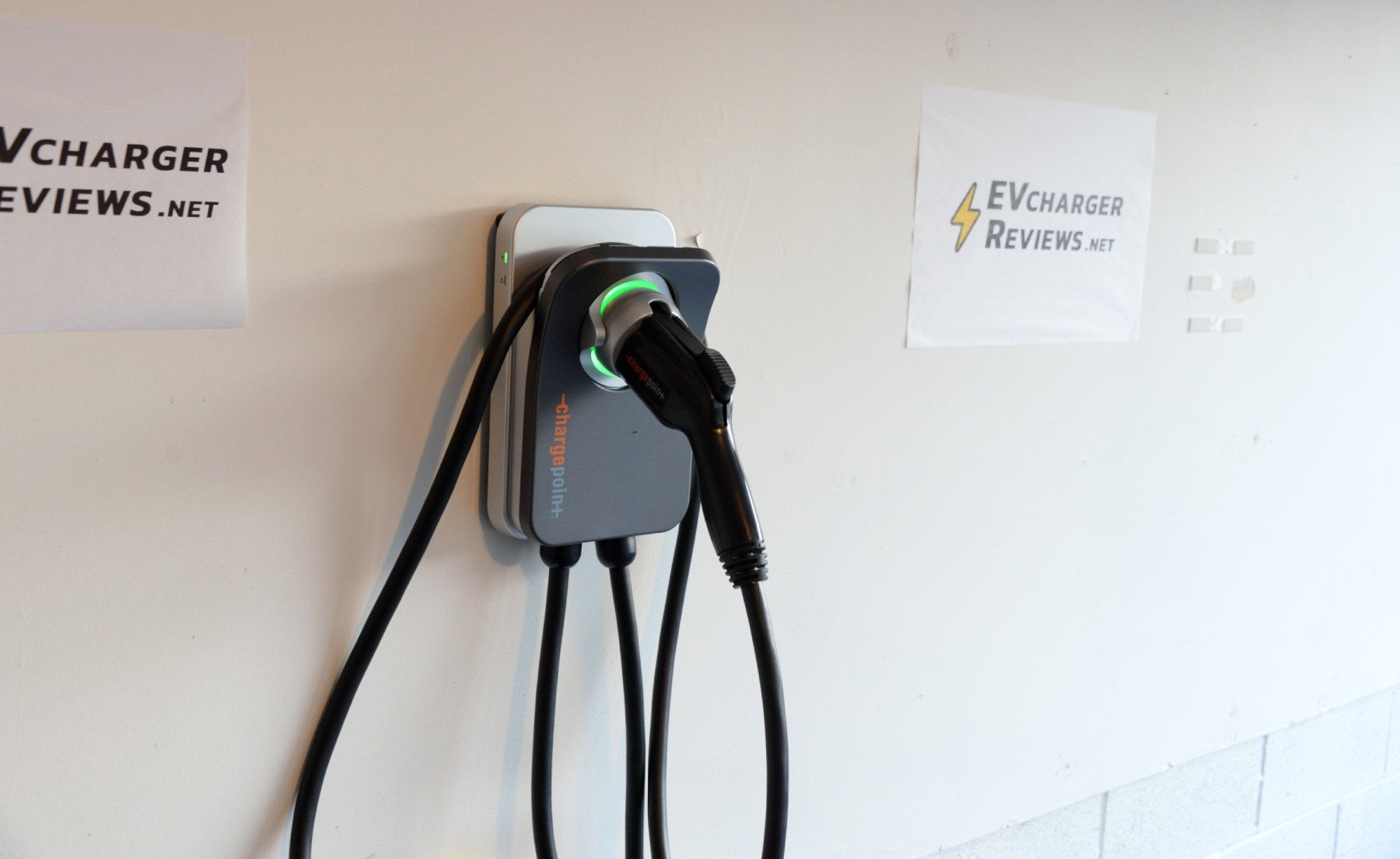
The recently updated Home Flex from ChargePoint continues to be one of the best options for home charging. The brand also runs a large public charging network, allowing drivers to use a single app for home and away charging sessions. The 50-amp output is more than enough to help recharge the EV6 at full Level 2 speed.
The companion ChargePoint app allows you to schedule charging sessions when electricity is cheapest, as well as send you reminders if you forget to plug in your car. Compatible with most EVs on the market, the ChargePoint Home Flex is our top choice for EVs like the Kia EV6.
Specs
- Amperage: Up to 50 amps
- EV Connector: J1772 or NACS
- Home Connection: NEMA 14-50, 6-50, or hardwire
- Cord Length: 23 feet
- Weatherproofing: NEMA 3R
- Networking: Wi-Fi + BT
- App Control: Yes
- Warranty: 3 years
Pros
- High-quality cord material
- Many plug-in installation options
- Alexa/Google Home integration
- EnergyStar certification
Cons
- Only one Home Flex can be paired to an account
- The product is heavily dependent on the app
Grizzl-E Level 2 EV Charger (40 Amp)
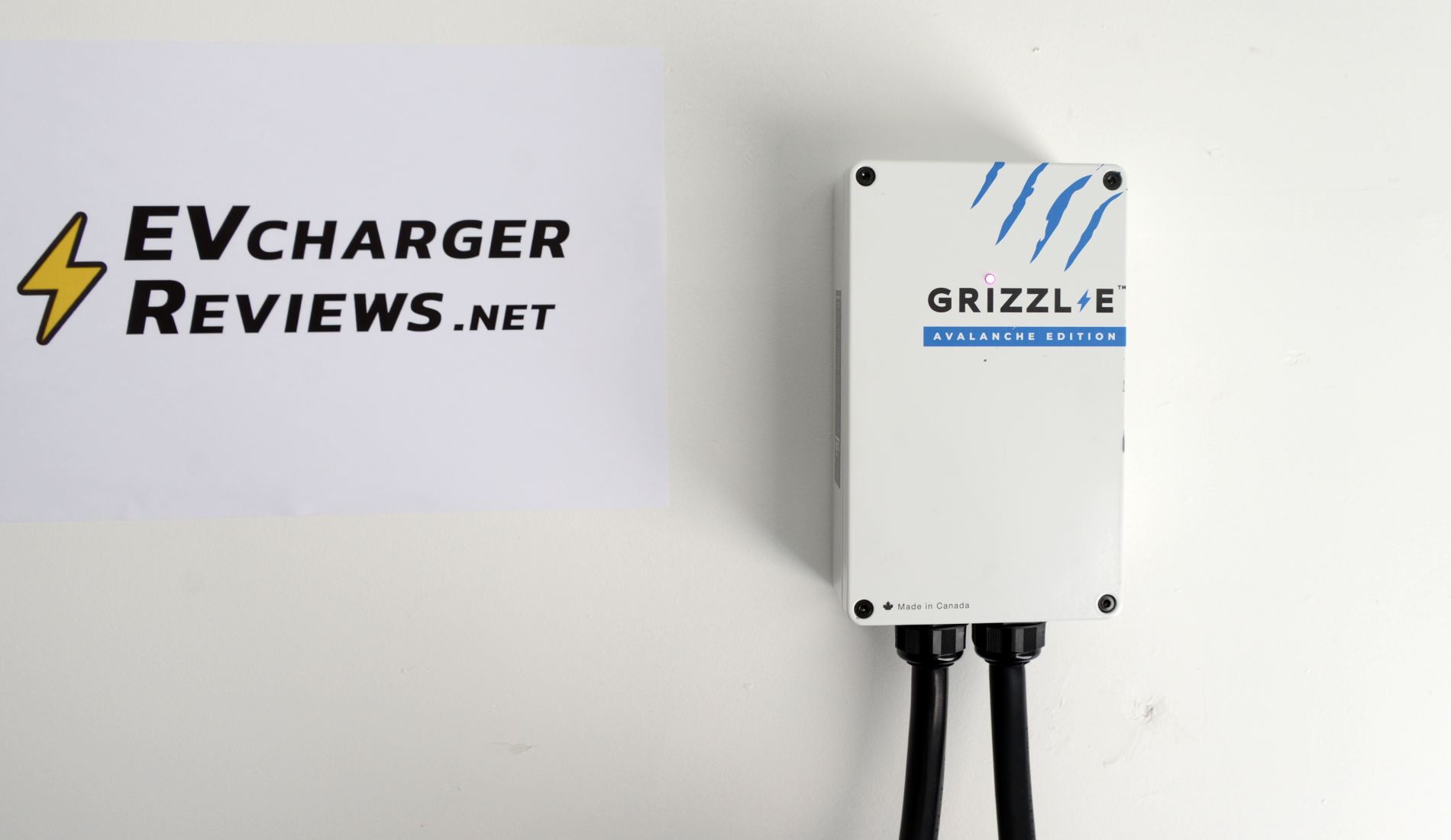
The Grizzl-E Classic EV charger is one of the best options for drivers who want an easy transition from gas to electric driving. There are no app or Internet-connected features, just an easy-to-use plug-and-play charging station with excellent weatherproofing and durable cord.
Grizzl-E is based in Canada, so their products are designed to perform in extreme weather conditions. The operating temperature range is between -22F to 122F for outdoor usage.
This charger is available with either NEMA 14-50 or NEMA 06-50 wall connectors (check the SKU when ordering), and all variants can be hardwired by an electrician.
Specs
- Amperage: Up to 40 amps
- EV Connector: J1772
- Home Connection: NEMA 14-50, or hardwire
- Cord Length: 24 feet
- Weatherproofing:
NEMA 4 - Networking: No
- App Control: No
- Warranty: 3 years
Pros
- Durable construction
- Heavy-duty charging cable, suitable for extreme climates
- Value
Cons
- No smart features or app control
- Plastic external cord holster
J+ Booster 2 (40 Amp)
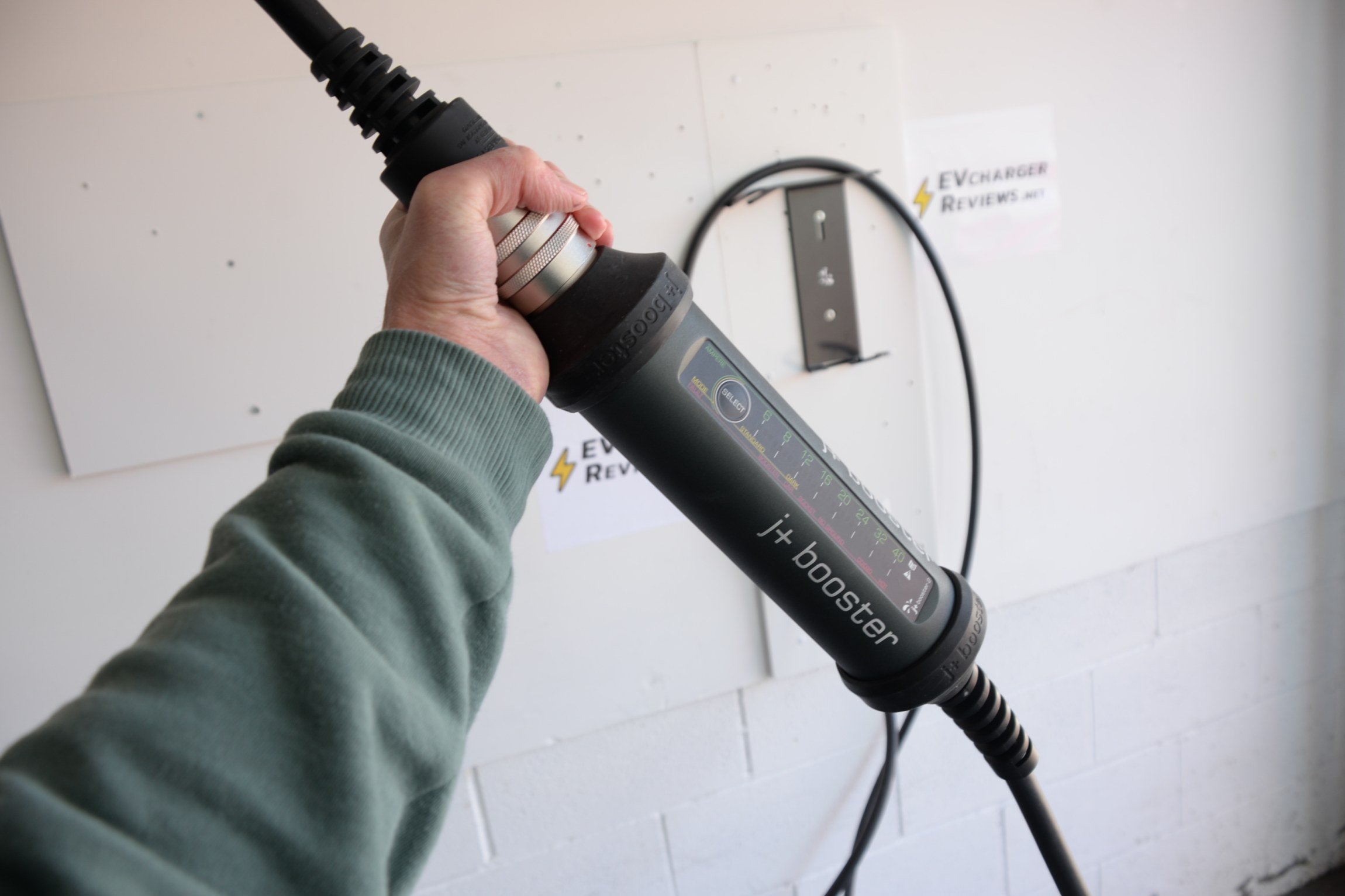
Need something portable that can also take a beating? The J+ Booster 2 is the top choice for a portable EV charger that can double as a home charging station too. It’s lightweight at 7.7 lbs. but extremely durable thanks to the aluminum body. The Booster 2 from J+ is manufactured in Germany.
This charger can deliver up to 40 amps to the vehicle, but can also be configured to operate at lower amp modes. A NEMA 14-50 adapter is included, but additional wall outlet adapters are available for even more charging options. A metal wall-mounting bracket is included, as well as a hard shell travel case. This mobile EV charger is built to last, but we wish the cord material was a little bit softer.
Specs
- Amperage: Up to 40 amps
- EV Connector: J1772
- Home Connection: NEMA 14-50, interchangeable adapters
- Cord Length: 21 feet
- Cord Thickness 16 mm
- Cord Gauge: AWG 10
- Weatherproofing: IP67
- Networking: No
- App Control: No
- Warranty: 3 years
Pros
- 40 amps in a small package
- Interchangeable input cables
- Industrial build quality
Cons
- The cord is stiffer than competing products
- Pricey
Emporia EV Charger (48 Amp)
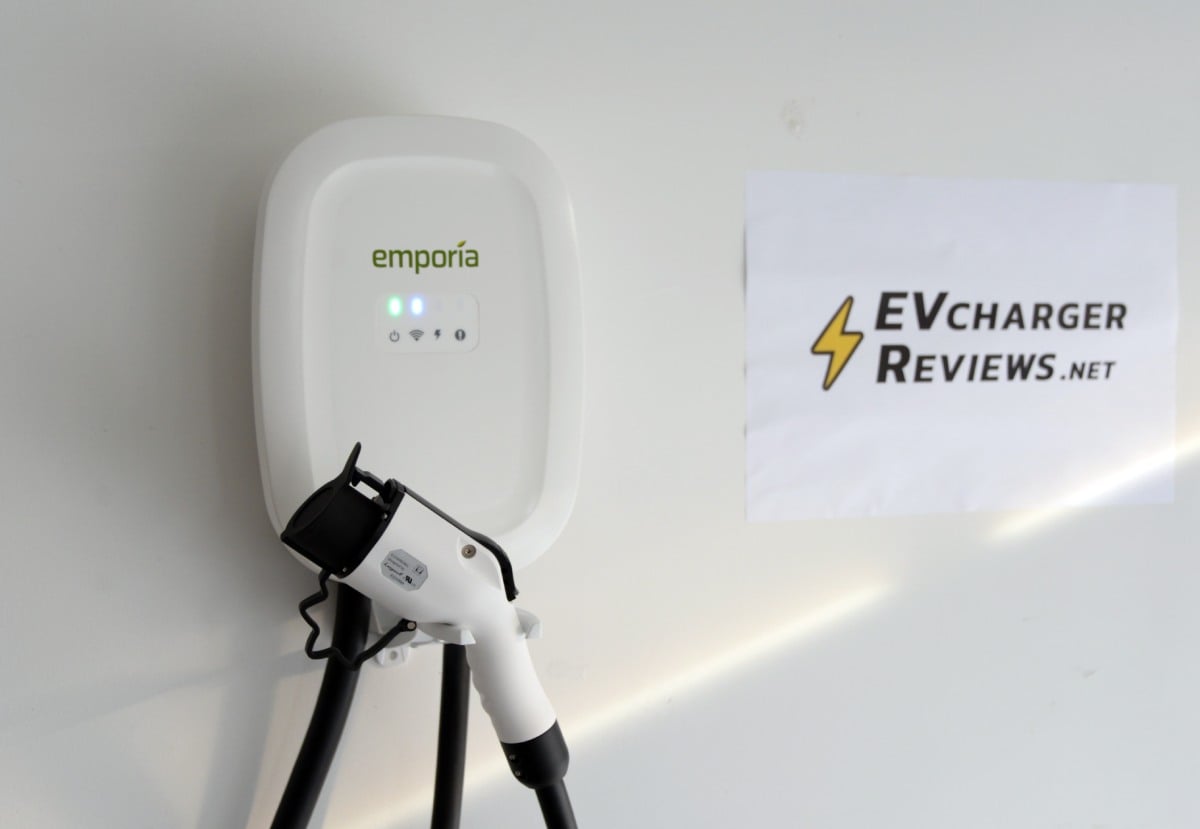
Emporia offers a variety of smart home energy products, and their EV charger product fits nicely into their ecosystem and app. If you are considering building out a smart home with connected appliances, the Emporis EV charger is a great option that offers 48 amp charging at a relatively low cost.
We really liked the high power output (48 amps hardwired, 40 amps over NEMA 14-50), which is enough to reach the maximum Level 2 charging speeds of the Kia EV6. The Emporia charger comes with a highly durable single-piece metal charge cord holder, while most competing brands throw in a cheap plastic cord holder into the box. Installation and app configuration were relatively easy as well.
Specs
- Amperage: Up to 48 amps
- EV Connector: J1772
- Home Connection: NEMA 14-50 or hardwire
- Cord Length: 24 feet
- Weatherproofing:
NEMA 4 - Networking: Yes
- App Control: Yes
- Warranty: 3 years
Pros
- Lower cost than competitors
- Emporia app connectivity and scheduling
- High-quality metal charge plug holder
Cons
- The charge cord is shorter than the competition
- The charger enclosure box is made from plastic
We tested 20+ products in order to arrive at our recommendations. Find all of our tested EV chargers here.
Frequently Asked Questions about charging the Kia EV6
Full access to Tesla Supercharger stations is expected around March 2025, but partial access is available already at select locations with Tesla magic docks. See Tesla app for availability.
No. As of this writing, the EV6 does not include any Level 1 (120v) or Level 2 (240v) charging cables. The dealership may offer to sell you a home charger with the car, but it pays to shop around. Dealers make high margins on accessories. You can likely save a lot of money buying a home charger (or portable charge cable) from online retailers.
Yes, the EV6 is capable of Level 1 charging from regular wall plugs. But no charging cable is included with the car. Various EV chargers are available on the market capable of both 110v and 220v (Level 2) charging.
Standard J1772 connector, like the majority of other EVs in North America.
The charging port is located on the right-side rear corner of the car, under the tail lights. This is an unusual design choice, so consider this port placement when installing your home charging station. 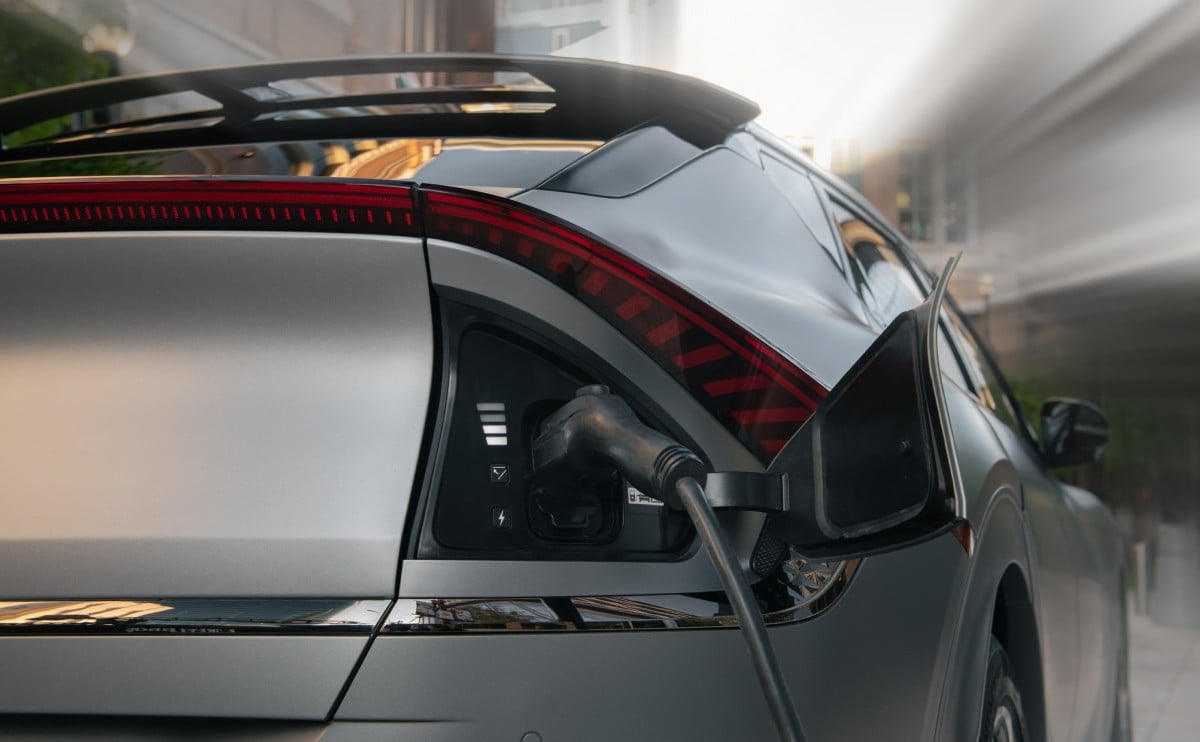
Level 2 home charging up to 11.5 kW is supported on AC.
Most home charging setups operate between 7 kW and 9 kW. That means an EV6 with the larger 77.4 kWh capacity battery would take 9 to 11 hours to fully recharge. Keep in mind that you will rarely need a zero to 100% charge. The Kia EV6 can accept as much as 11.5 kW on Level 2.
There is no problem with reaching 100% state of charge when you need the full range of the car. But we suggest charging to 100% only when you need it, and only immediately before leaving on your trip. Batteries may age faster if they are stored near 0% or near 100% state of charge for a while. For short daily trips, you can set a charge limit of 80% or 90%, to minimize this storage condition.
The Kia EV6 has an EPA-rated range between 232 miles and 310 miles depending on battery size and AWD and RWD configurations. Driving style and wheel selection will also affect how far the EV6 will drive, with smaller-diameter wheels typically being more efficient.
Most of the trim levels in the US come with 19-inch wheels and 235/55R19 tires. The top trim GT cars come with 20-inch wheels and 255/45R20 tires. Larger diameter wheels and wider tires will consume more energy and reduce range slightly.
Kia recommends cold tire pressure to be set at 36 psi, for both 19 and 20-inch wheel variants. Under-inflated tires will cause reduced range, and over-inflating may cause early tire wear.
Yes, but only in the all-wheel-drive versions of the vehicle. EV6s equipped with heat pumps will be significantly more efficient in colder climates during winter months. Heat pumps use less energy to heat the cabin than simple resistive heaters, therefore more driving range is retained.
If we assume a household energy cost of 13 cents per kWh during off-peak, it would cost around $10.53 to fully charge a 77 kWh battery at 95% charging efficiency. There is always a little bit of energy loss during charging.
Yes, like most EVs, the Kia EV6 will use about 1 percent of battery energy per day to power electronics in standby mode. This is normal and expected. When parking the Kia EV6 for prolonged periods of time, consider leaving it plugged into a wall charger and set the charge limit to around 50% for maximum battery health preservation.
Yes, the EV6 is able to power regular 120-volt electronics and appliances by attaching an adapter to the charging port. Adapters are sold by Kia, but there are third-party options available online too. 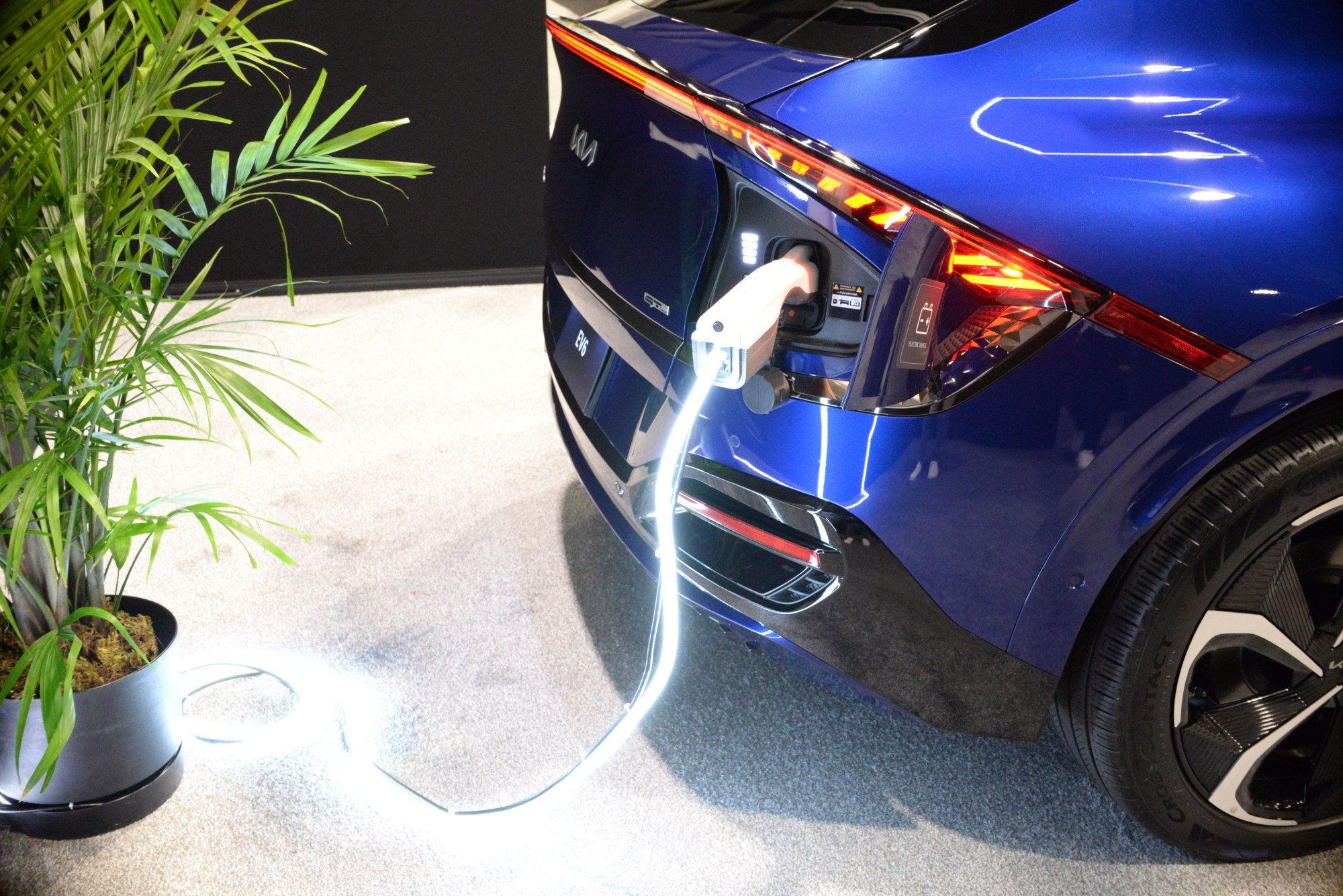
Why do we stand behind our product reviews? We test products for a minimum of two weeks before we can recommend them to our readers.
